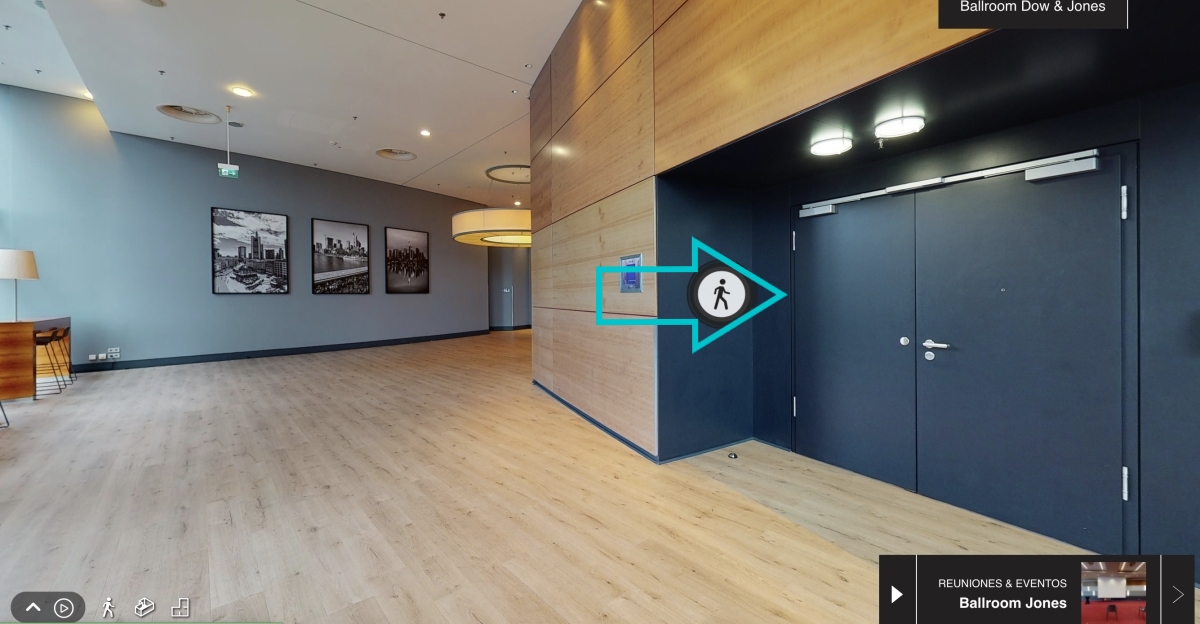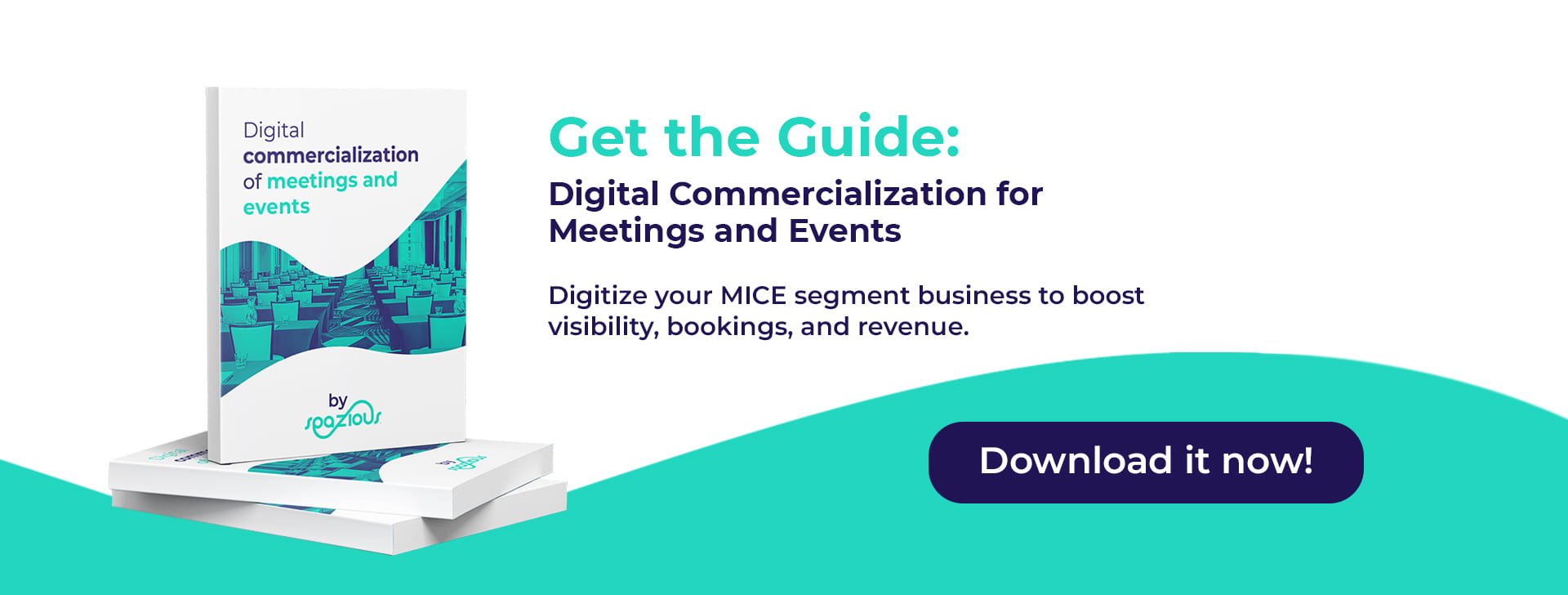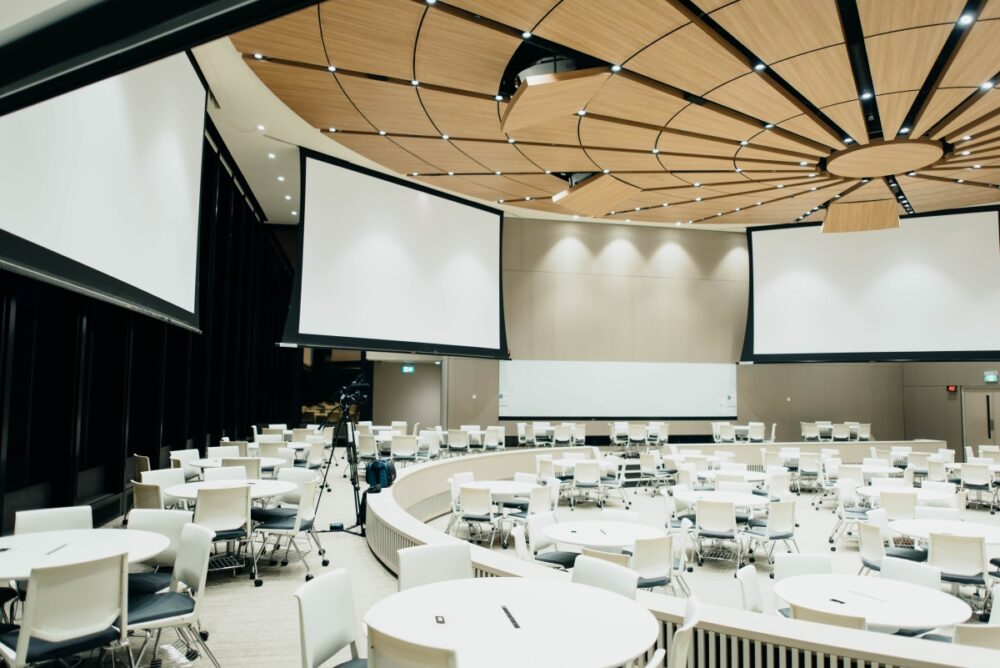Site inspection for event venues for 2022
A site inspection is a process which helps make sure that everything is running smoothly. This type of inspection can be helpful for hotels and event venues. The inspector will inspect the venue to see if it meets all of the standards that you need before hosting your event or letting your customers meet there.
This process of selecting and inspecting a venue can be difficult, time-consuming, and at times very stressful.
Spazious simplifies the process by providing a virtual inspection tour of any potential venue prior to booking, not only of the room but of all the facilities necessary for attendee comfort.
All one has to do is enter the desired venue and date, and Spazious will generate a 360-degree video with a dynamic one-on-one tour of the space in question. Virtual tours give us the opportunity to explore spaces before entering them.
How to Conduct a Site Inspection of an Event Venue for Your Next Conference
The following is a list of what you should consider when conducting a site inspection:
- Size and capacity: Does the venue offer enough space for your attendees?
- Amenities: What amenities does the venue offer? What type of catering will be provided?
- Layout: Is there adequate room for registration and breakout sessions?
- Traffic flow: Is there enough space to accommodate foot traffic, as well as large groups such as exhibitors and speakers.
- Lighting: Does the venue have adequate lighting throughout, especially in meeting rooms and exhibition halls.
- Aesthetics: What is the vibe of the venue like, and is it consistent with your company culture – or does it clash with it?

Detailed checklist with the different cases for the review and inspection of the premises before a regular event
The preparation of the site inspection of an event venue is a lot more than just getting it ready for people to walk through and attend. It is a careful consideration of how to make this special space as beautiful and inviting as possible. Not only does this consideration involve making the space functional, but also making it aesthetically pleasing.
Site preparation includes:
- Determine the size, shape and layout of the site
- Perform site walks with various levels of staff to generate ideas about what they see in their surroundings and how they might be able to use that space for their event attendees.
- Clearance inspections: venue renters generally have evacuation plans in accordance with the number of clients for each event.
How can Spazious help on preparing the site?
The whole site inspection tasks are not easy. With the help of Spazious, you can make it easier. It provides all the information in one place and helps you to visualize the entire network of events and venue areas.
Spaces are easily measured in detail and tested with the diagramming tool where distances and confluence areas can be evaluated with real simulations. Our success in social distancing during the pandemic is easily replicable for these cases.
Some of the inspections that may be needed by food service professionals on an event are:
- Potentially needing to get into production kitchens, walk-in freezers, and dishwashing areas.
- Requiring a general overview of the food preparation and storage facilities.
- Production spaces in kitchens, recognizing storage and waste areas.
- Checking for good hygiene practices throughout the event hall.
If there is any doubt about how an organization maintains its kitchen and facilities, it is important to contact in advance to ask about their practices and procedures.
Food service inspections – In which way can Spazious be useful?
Guest Registration
This initiative provides to your event’s attendees the convenience of entering the venue without waiting in lines and also gives you the ability to track all your event’s guests in one centralized location.
Entry Points are points of entry at an event venue, where guest registration is used for convenience and tracking purposes.
Spazious help with the entry points
Planning different access points to an event is easy with a tool that makes it easy to send different entry points to an event to avoid excessive confluence. Sending different floor plans is easy by sharing through the CRM or booking system.
The venue team needs to be able to provide the attendees with the best experience possible.
Venues are usually required to offer various registration options for their events. Some of the options include pre-registration, onsite registration, online registration, and phone registration. Venues should be familiar with the process of each option to ensure that they are providing their customers with the best possible service.
There are services that can be offered in addition to registering for an event. These are called additional services. They are used when the event organizers want to give their attendees an even better experience. For example, they could offer a service like pickup and drop off service for attendees who need help with transportation or catering in order to make their stay less stressful.
Spazious diagramming tool, offers the possibility to select the available services to be included.
To avoid confusion and ensure that everyone can find their way to the event smoothly, there is a registration process that attendees may have to go through.
Event staff will be waiting at the entrance, giving attendees a warm welcome and making sure they familiarize themselves with the venue and meet all their needs. They can also share a map in case attendees or have any issues accessing Wi-Fi should they need it.
Registration lines are one of the most important things for an event organizer. They need to know how many people are waiting in the line, what they are waiting for and how long they have been there. The more time that passes, the more people will get bored and leave.
Some people might walk away from a registration because it was too long or boring. That is why it’s crucial to make sure that registration lines are well managed and organized, so both attendees and organizers can be satisfied with their experience at the event.
These registration desk tips will help you organize your next event:
Make sure you have enough tables because you never know when someone might need to use them for something else during their wait in line
Use signs to let people know where they’re going.
Registration Lines Split Based on Guest Type or Length of Stay
A good example of queue differentiation is Disney’s line splitting based on guest type or length of stay. Guests with shorter stays have the option of entering through the Disney Springs entrance, where they can enjoy some shopping and dining before having to go to their hotel. Guests with longer stays use the main entrance, where they make use of all of Disney’s offerings.
Guests staying for longer periods can explore all that Disney has to offer, including services such as groceries, laundry and other amenities that may not be available at their home resort.
How can Spazious be used in Registration and entry?
In this way it is possible to segment and organize the entrance to the event by zone or by type of user.
Guest services are offered for guests of all types of events. They provide a variety of services, such as, food service, event management, event security/ushers/security officers, facility management and parking.
Some guest services are offered on an event venue. This includes an auditorium or meeting hall that can be reserved for an event. This type of venue is used to hold events that have a large number of attendees. It can be rented out by organizers who want to host their own events in the space.
Event venues are very popular because they offer many different types of spaces for many different events. That way people can find what they need no matter what it is – from music festivals to weddings.
How can a tool like Spazious advance a service list?
Select the range of services to be included in your event with a visual medium – Spazious has a visual menu of audiovisual, food and beverage services, extra requirements or one day packages. (Check our post in wedding packages).
Wifi, mobile charging stations, printed materials, postal services, luggage storage are all important amenities that hotels and other venues provide.
A complimentary wifi is a must. Mobile charging stations are also very useful for power-hungry travelers. Postal services are also necessary because the hotel needs to have contact information for guests who have left during their stay. Luggage storage can be offered as an amenity if there is space available in the hotel lobby or near the front desk.
Charging stations – energy plugs and other services are visible through 3D virtual tours.
Information centers and waiting areas are often overlooked by event planners and venue managers. Even with technology, it is still necessary to provide physical spaces for attendees to rest and gather information before the event.
The best waiting areas provide basic amenities such as water, wifi, power outlets, comfortable seating and bathrooms.
Busy venues should have more than one information center available. These centers can be staffed with people or machines – either way is effective as long as they can answer questions efficiently and clearly.
Guest Waiting Areas
A guest waiting area is an area designed for the comfort of guests who are waiting to be called for an interview or to be served. It is usually near or adjoining the office or other facility. The seating arrangements in a guest waiting area should provide comfortable seating, privacy, and sufficient table and chair space for guests to use during their wait.
A guest waiting area can be created by adding tables and chairs near the entrance of your facility. When designing this space consider supplying enough space for people to sit comfortably, privacy (because this is where people will wait), comfortable seating, adequate table and chair space, private phone booth access if available, enticing snacks/drinks/reading material (depending on your company), and wireless connectivity.
Information centers are places where people can go to find out more information on a particular topic. They are often indoors, so they have free wi-fi, which is nice for those who don’t have their own data or wifi. These centers also carry printed materials that people can take with them, like brochures and flyers that give more information about the topic.
How to simplify all these tasks with the help of Spazious as a visualization and booking tool?
The entire process of site inspection is not easy.
Spazious will make it easier. It provides all of the information in one place, and helps you visualize the entire network of events and venues, share it with your team and attendees.
Spaces are easy to measure in detail and set with different obstacles. With the Diagramming Tool, distances can be easily measured with real simulations for perfect angles. We’ve had a lot of success in social distancing for various cases, hence why they’re so useful.
Entry tools and uses
With our 3D floor plan, each guest will be able to walk around in your event space and engage with it for longer. They will also be able to do so on their own customized route, which makes it possible to segment and organize the entrance to the event by zone or by type of user.


